On June 6th and 7th, SPHERE partners gathered in EURECAT’s Barcelona offices for the project’s 1st technical meeting: two days of discussions and workshops to better define our BIM-based Digital Twin platform.
The main focus of the discussion was to review several technical points that dealt with defining the different use cases needed for each pilot site and to determine how to test the tools that will be included in the Digital Twin Environment. Another important point was to set the basic requirements to use the platform in order to help establish a base model. In this sense, it was concluded that in order to reach the largest number of clients, especially those linked to refurbishment in the construction sector, the minimum requirement would be to use 2D Object-based Models. Depending on the base model that users start with (2D, 3D, BIM, etc.), they will be able to access a greater or lesser number of services. For example, a 2D CAD can provide access to basic building information but doesn’t allow the user to do an energy imulation of the building.

During the various exchanges and workshops, a lot of emphasis was put on the need to clearly define both the information and data processes as well as the orders and responsibilities of the different actions that happen during the building lifecycle (design, construction, operation, commissioning, etc.). These definitions are key to start creating the “Digital Twin Manager” user profile which would act as the Project Manager in charge of the maintenance of the Digital Twin Model. It may be available not only for a single user but a series of professionals in charge of making sure that the Digital Twin Model of the building has been updated accordingly to reflect any changes or activity, for example, after a reform. In order to do this, a BIM Execution Plan (BEP) will be provided as reference and serve as guideline to help develop the Digital Twin Execution Plan (DTEP).
Finally, the partners overseeing the platform architecture explained the advances made to date and set a deadline to have a first version and requirements available for the consortium. Among these requirements, two proposals where left on the table to review: the suggestion by VRM to use the Oauth Authentication Protocol for security issues when accessing the platform and the possibility of defining a roadmap towards the creation of a Digital Twin Certification.
All in all, this 2-day meeting was important in further defining SPHERE’s front-end and services which underpin it’s back-end data architecture, servers and necessary integrations. The issues and details discussed helped the consortium to make decisions and agreements for everyone to carry out specific technical actions in the upcoming months and carry SPHERE partners one step closer in the design of the BIM-based Digital Twin Platform.



